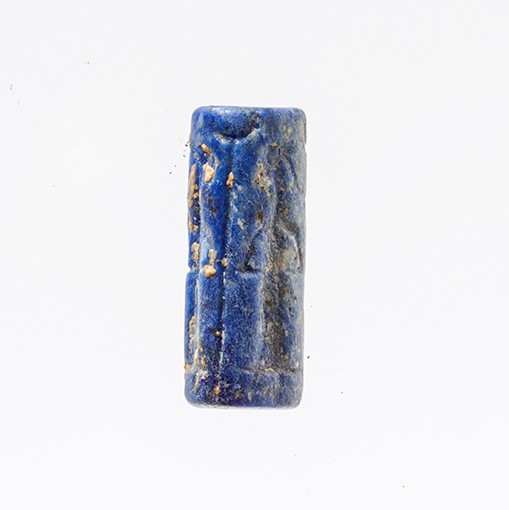
Collections:
Description:
Material from the Late Bronze Age Temple at Amman
Introduction by J.R. Green
The temple was discovered in 1955 when it was partially exposed by a bull-dozer during work on the civil airport of Amman. A rescue excavation was conducted at the time by G.L. Harding and four cylinder seals and thirteen scarabs from that excavation were published by W.A. Ward in Annual of the Department of Antiquities, Jordan (1951-) 8-9, 1964, 47-55.
In 1966 J.B. Hennessy undertook further excavations to confirm the stratigraphy of the complex and to further investigate its nature; it is from these excavations that this material comes.
On the evidence of imported Mycenaean pottery and other associated finds, the temple appears to have been in use between ca 1400 and ca 1200 bc. Three successive architectural phases have been identified within this period. The function of the building, in its initial phase at least, seems to have involved fire cult and possibly infant sacrifice in that human bones were found together with bird and animal bones in deposits associated with the construction of the temple.
Some preliminary accounts of the excavations have been published: J.B. Hennessy, “Excavation of a Late Bronze Age Temple at Amman”, Palestine Exploration Quarterly (1869-) 98, 1966, 155-162; G.R.H. Wright and J.B. Hennessy, “The Bronze Age Temple at Amman”, Zeitschrift für die Alttestamentliche Wissenschaft 78, 1966, 351-359; V. Hankey, “A Late Bronze Age Temple at Amman. I. The Aegean Pottery. II. Vases and Objects made of Stone”, Levant 6, 1974, 131-178. There is also useful discussion in J.B. Hennessy, “A Thirteenth Century bc Temple of Human Sacrifice at Amman”, Studia Phoenicia 3, 1985, 85-104, id., in: D. Homes-Fredericq and J.B. Hennessy, Archaeology of Jordan II.1 (Leuven 1989) 167-178, by V. Hankey, “A Late Bronze Age Temple at Amman Airport: Small Finds and Pottery discovered in 1955”, in: S. Bourke and J.-P. Descœudres (eds.), Trade, Contact, and the Movement of Peoples in the Eastern Mediterranean. Studies in Honour of J. Basil Hennessy (MeditArch Suppl. 3, Sydney 1995) 169-185, and by P. L. Seaton, “Re-Visiting Australian Excavations in the Amman Airport Temple”, in: A.G. Walmsley (ed.), Australians Uncovering Ancient Jordan (Research Institute for Humanities and Social Sciences, Sydney, 2001) 181-190.
From a more general perspective, see G.R.H. Wright, “Pre-Israelite Temples in the Land of Canaan”, Palestine Exploration Quarterly (1869-) 104, 1972, 17-32. A similar structure is published by P. McGovern in D. Homes-Fredericq and J.B. Hennessy, Archaeology of Jordan II.1 (Leuven 1989) 35-37 (Rujm el Henu East) and another published by F. Benedettucci and R. Sabelli in: M. Piccirillo and E. Allaith (eds.), Mount Nebo: New Archaeological Excavations 1967-1997 (Jerusalem 1998) 128-131 (and esp. Fig. 3). Also G. J. Wightman, Sacred Places: Religious Architecture in the Ancient World (Ancient Near Eastern Studies Suppl. 22, Leuven 2007) 176-177.
In the notes of findspot, A = area A = inside the temple; v, vi, etc. = area or room within the temple; 1, 2, 3, etc. = level. For the locations of the areas within the temple, see the accompanying plan.